One of the most versatile pastries, that always gives you good results, is the famous linzer. You make the dough, you cut out different shapes from it, and then decorate them reflecting the occasion. It can be a circle, a square with flouted edges, a heart, a star, a tree, or your favorite animal if you happen to have a cutter in its shape – anything you like, really.
Make an opening in half of the cookies in a shape that represents the season, the event, or your mood – flower, tree, letter, snowman, bell – again, anything you like that will make your cookies unique. These will be used as the top layer. Then take a pair of cookies, one “full” and one “lid”, and sandwich them together with jam (different color jam is good, Nutella is easy, or home-made chocolate ganache can also be an option).
You probably know about linzer cookies that they can be a little bit hard and easily breakable right after baking, but in a few days – if your family hasn’t eaten them to the last piece – they will be soft and almost melting in your mouth.
I made these particular orange cookies for first time a few years ago with my daughter-in-law in their home when visiting them in California for Christmas. The shape was circular and we used little cutters that Jolene had (in my opinion, the best was the candy cane shape that looked like her initial). For the visit, I took with me a newly acquired cookbook (the Hungarian 66 karácsonyi édesség by Mari Lajos), and from the many delicious recipes we chose these orange sandwich cookies.
This year, I made stars and flowers designed with tiny stars, flowers, circles, and hearts.
The dough should rest in the refrigerator overnight. The shaping and decorating can be a little bit time consuming (maybe two hours or more), so invite your family members or friends to join in the fun.
for the dough
orange – 1
candied orange – 50 g
all-purpose flour – 500 g
baking powder – 1 teaspoon
salt – a pinch
unsalted butter, softened – 250 g
powdered sugar – 200 g
egg yolks – 2
egg – 1
for the filling
peach, raspberry, and apricot jam – 150 g each
peach liquor, raspberry syrup, apricot brandy (optional) – 2 tablespoons each
Wash the orange well under hot running water, dry, and grate the zest, then cut in half and squeeze out the juice. Cut the candied orange into tiny pieces. In the bowl of an electric mixer, beat together the butter and powdered sugar until creamy. Add the orange zest, candied orange, egg yolks, and egg. Mix in the flour, baking powder, salt, and 3-4 tablespoons of orange juice. Form a ball from the dough, wrap in plastic, and rest in the refrigerator overnight.
The next day, preheat the oven to 180 °C (350 °F). Line 3-4 cookie sheets with parchment paper (if you don’t have this many sheets, bake the cookies in batches). On a lightly floured work surface, roll out the dough to approximately 3 mm-thick. With cookie cutters of your choice, cut out individual pieces of dough. Use a variety of smaller cutters to remove the centers from half of the cookies – you are making the upper lids. Gather the leftover dough, roll out again, and cut out more pieces until all of the dough is used. Place the cookies on the baking sheets leaving some space between them – they will spread a little bit as they are baked. From time to time, you should dip the cookie cutter in flour before cutting, to ensure nice, clean cuts. Chill the cookies on the baking sheets for half hour (refrigerate or simply place them to a cooler room). Bake for approximately 8-10 minutes until the edges are golden. Cool on the trays for a bit, then transfer them to your work surface.
Sprinkle the lids with sifted powdered sugar. To assemble the cookies, put a little amount of the jam (or Nutella or jam mixed with syrup, liquor, or brandy, if using) in the middle of a full piece and cover with the lid. As you lift off the lids from the work surface (especially if it is wooden), you will notice beautiful negative spaces.
You will get about 60 cookies which should serve a crowd. Store in airtight containers placing parchment paper between the layers. The unfilled cookies freeze well.
A híres linzer, ez az egyik legsokoldalúbb süteményfajta, gyakorlatilg el sem rontható. Készítsd el a linzertésztát, szúrj ki belőle különféle alakzatokat, aztán díszítsd ki az alkalomhoz illően. Akármilyen kiszúrót választhatsz: kört, recés szélű négyzetet, szívet, csillagot, fát, vagy kedvenc állatformát – bármi jöhet, ami neked tetszik. A kiszaggatott tésztaalakzatok feléből készítsd el a sütik gyűrűs fedőlapjait: szúrj ki apró, az évszakot, adott eseményt, vagy épp pillanatnyi kedvedet tükröző mintákat (kisvirág, fa, betű, hóember, csengettyű), amik majd egyedivé teszik aprósüteményeidet. Aztán ragassz össze egy-egy teli és gyűrűs alakzatot valamilyen finom lekvárral (használj különféle színű lekvárt, de használhatsz nutellát vagy épp otthon készült krémet is). A linzertésztával kapcsolatban azt valószínűleg tudod, hogy a linzerek frissen egy kicsit kemények és törékenyek lehetnek, de pár nap alatt – ha családtagjaid netalántán még nem fogyasztották volna el az összeset – megpuhulnak, s szinte szétolvadnak az ember szájában.
Ezeket a narancsos aprósütiket először el a menyemmel, Jolene-nel együtt készítettük el karácsonyra pár évvel ezelőtt, amikor náluk voltunk Kaliforniában. Akkor egy kör alakú kiszúrót használtunk és Jolene téli témájú kis formácskáit (szerintem a “candy cane” volt a legjobb, mert úgy nézett ki, mint a J betű).
Lajos Mari “66 karácsonyi édesség” című süteményeskönyvét, ami azon a nyáron került a könyvtáramba, vittem magammal, s együtt választottuk ki a sok finom közül épp ezt a receptet. Az idei sütéshez csillag- és virágalakzat mellett döntöttem, s a díszítő lyukak kiszúrásához pici csillag-, virág-, kör- és szív-formákat használtam. Ajánlatos a tésztát egy éjszakán át hűtőszekrényben pihentetni. A sütemények elkészítése egy kicsit időigényes lehet (két, két és fél óra), ezért megéri a családtagokat, barátokat is bevonni a munkálatokba.
az omlós tésztához
narancs – 1
cukrozott narancshéj – 50 g
finomliszt – 500 g
sütőpor – 1 teáskanál
só – egy csipet
lágy vaj – 250 g
porcukor – 200 g
tojássárgája – 2
tojás – 1
a töltelékhez
őszibarack-, málna- és sárgabaracklekvár – mindegyikből 150 g
őszibaracklikőr, málnaszörp és barackpálinka (nem kötelezőek) – mindegyikből 2 evőkanálnyi
A narancsot forró, folyó víz alatt alaposan megmossuk, megszárítjuk, lereszeljük a héját, majd félbevágjuk és kifacsarjuk a levét. Apróra vágjuk a cukrozott narancshéjat. A vajat és a porcukrot kézi- vagy konyhai robotgéppel simára kidolgozzuk. Hozzákeverjük a reszelt és cukrozott narancshéjat, a tojássárgákat és a tojást. Beledolgozzuk a lisztet, sütőport, sót, és 3-4 evőkanálnyi narancslét. A tésztából cipót formálunk, fóliába csomagoljuk, és egy éjszakán át a hűtőszekrényben pihentetjük.
Másnap a sütőt előmelegítjük 180 °C-ra. Három vagy négy tepsit kibélelünk sütőpapírral (ha nincs ennyi tepsink, süthetünk kétszerre is). A tésztát enyhén lisztezett gyúródeszkán kb. 3 mm vastagságúra kinyújtjuk, majd tetszés szerinti alakzatokat szúrunk ki belőle. Ezután a tésztaalakzatok felét különféle alakú, de kisebb formával újra kiszúrjuk – lyukas fedőlapokat készítünk. A maradék tésztadarabokat újra összegyúrjuk, kinyújtjuk, kiszaggatjuk, és így tovább, amíg a tészta el nem fogy. Az alakzatokat a tepsikre helyezzük. Kis helyet hagyunk ki közöttük, mert sütés közben picit megnőnek. Időről időre a kiszúróformákat lisztbe mártjuk, hogy szép és tiszta széleket kapjunk. Ha túl ragacsosnak találnánk a tésztát miközben dolgozunk vele, tegyük 30 percre a hűtőbe vagy egy hűvösebb helységbe. Az aprósütik kb. 8-10 perc alatt sütnek világos aranyszínűre. A sütőlapokon hagyjuk langyosra hűlni, majd a munkalapra rendezzük őket.
A lyukas darabokat meghintjük porcukorral. Ezután a teli tésztaalakzatok közepére lekvárt pöttyintünk (vagy nutellát, illetve likőrrel, szörppel vagy pálinkával vegyített lekvárt), és tetejükre helyezzük a porcukorral meghintett párjukat. A fedőlapok után gyönyörű lenyomatokat maradnak a porcukorban. Kb. 60 darab sütink lesz – egy nagy társaságnak is elég. Jól záródó fémdobozokban, sütőpapírral rétegezve tároljuk. A töltetlen darabok jól tűrik a fagyasztást.

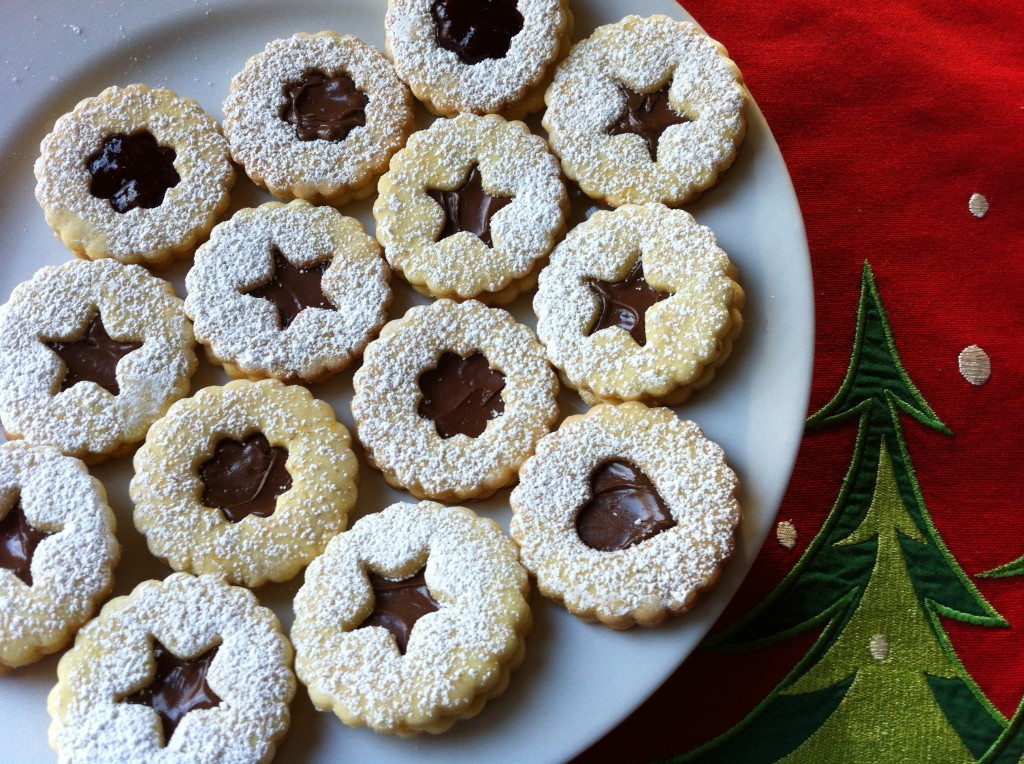

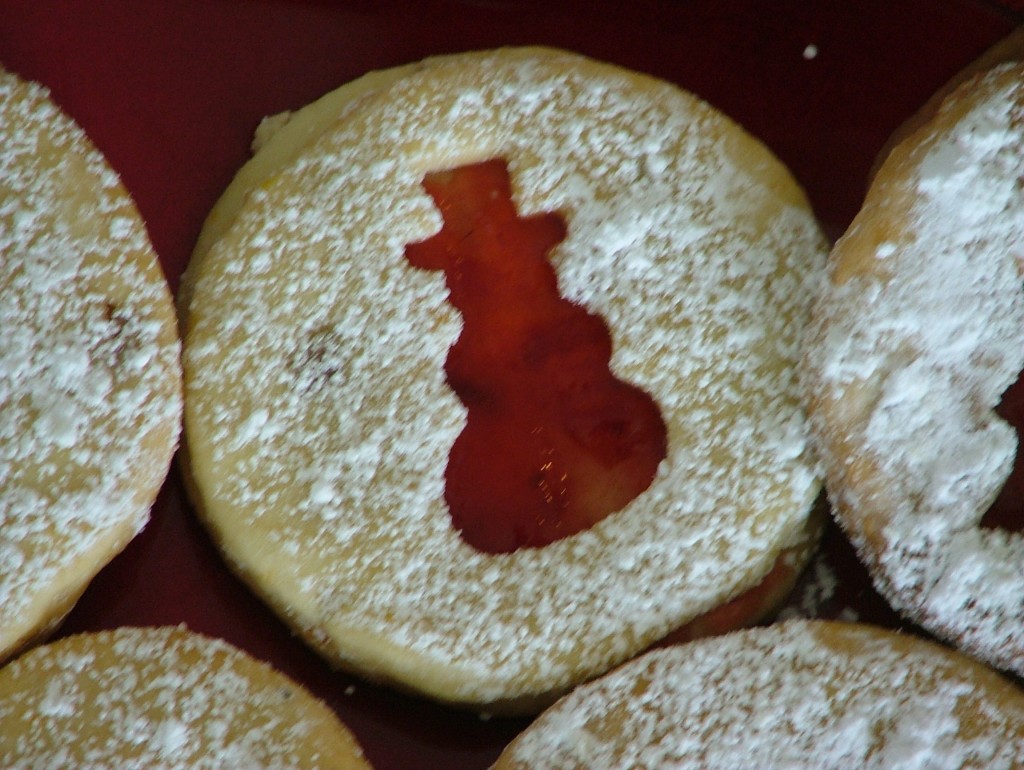
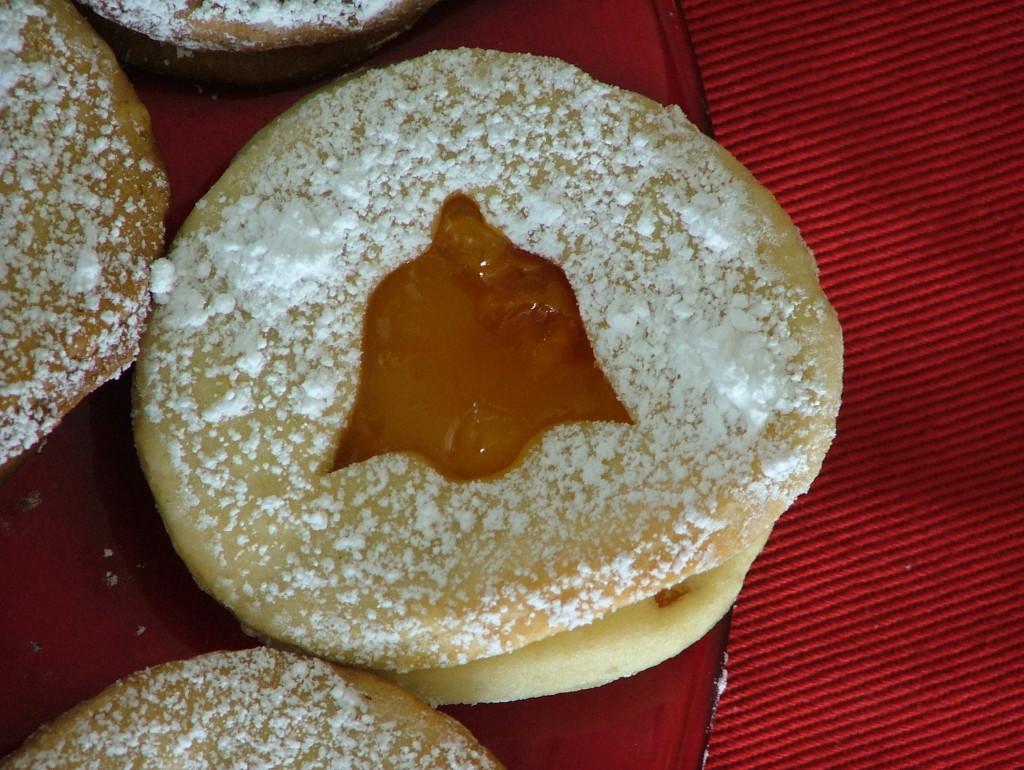
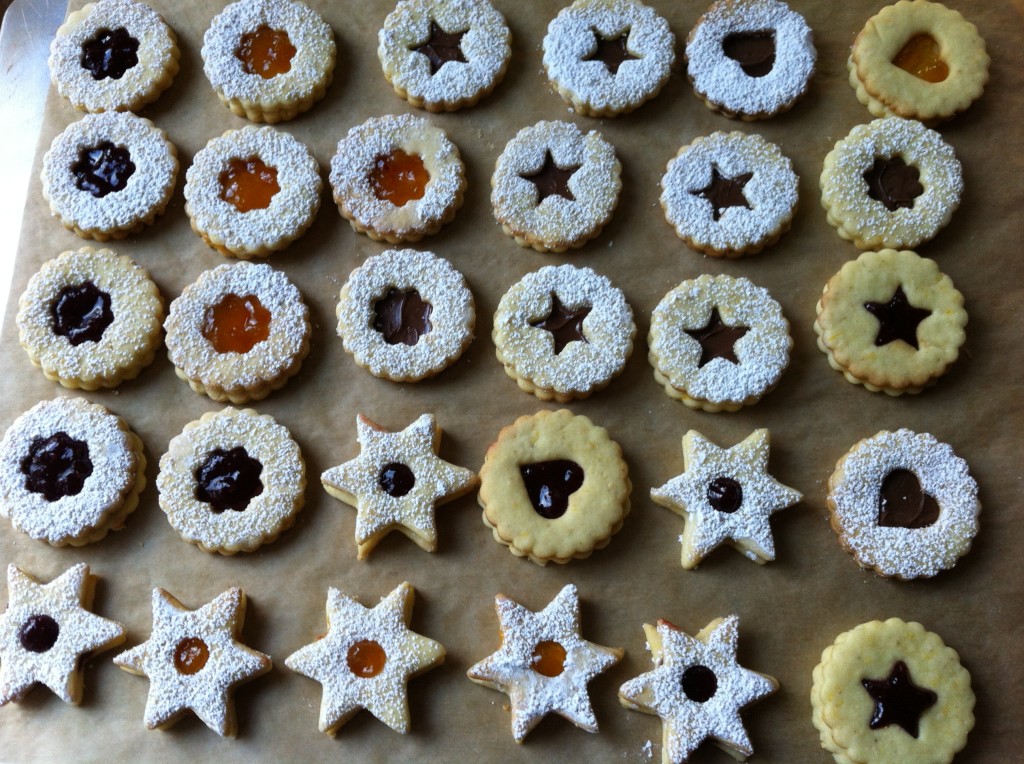
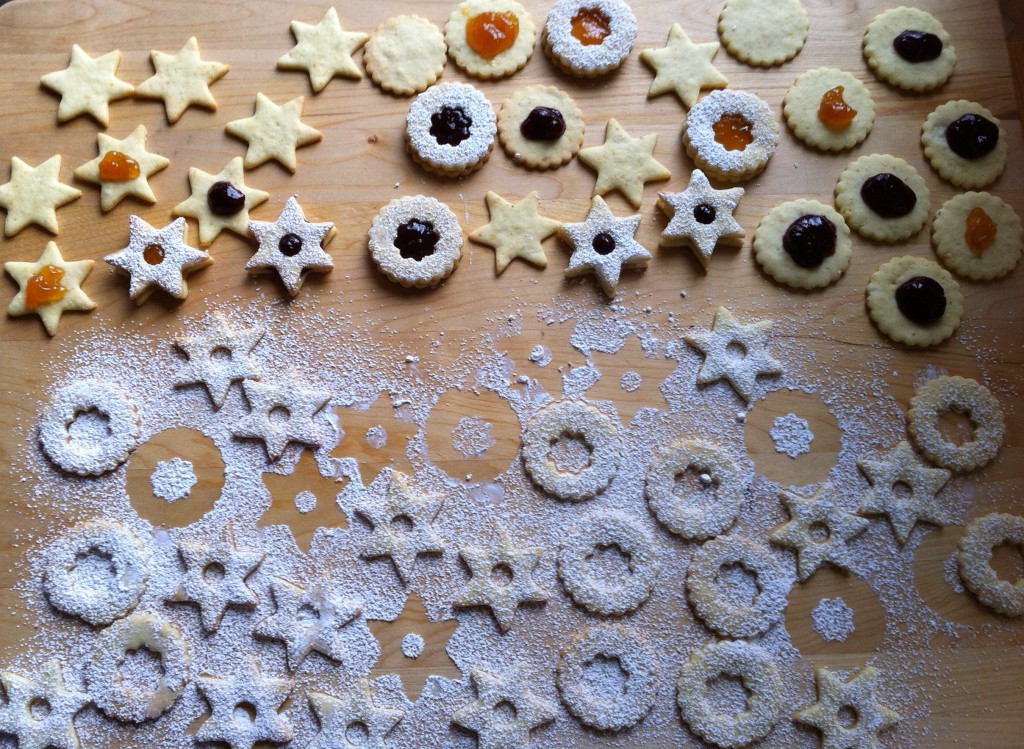
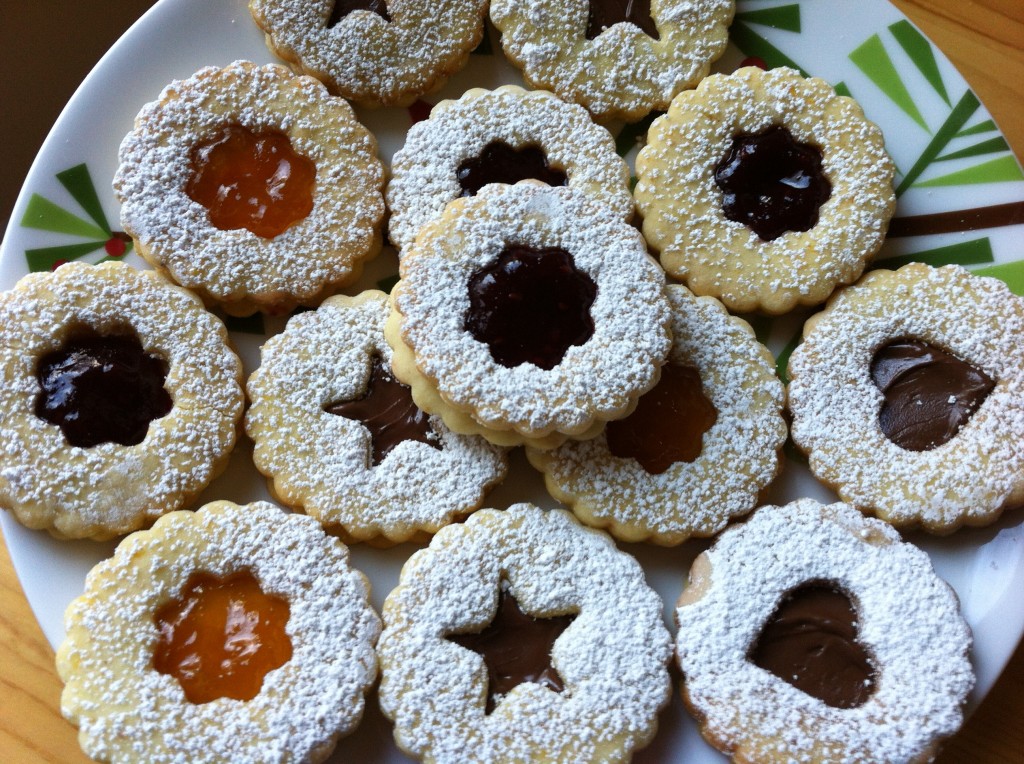

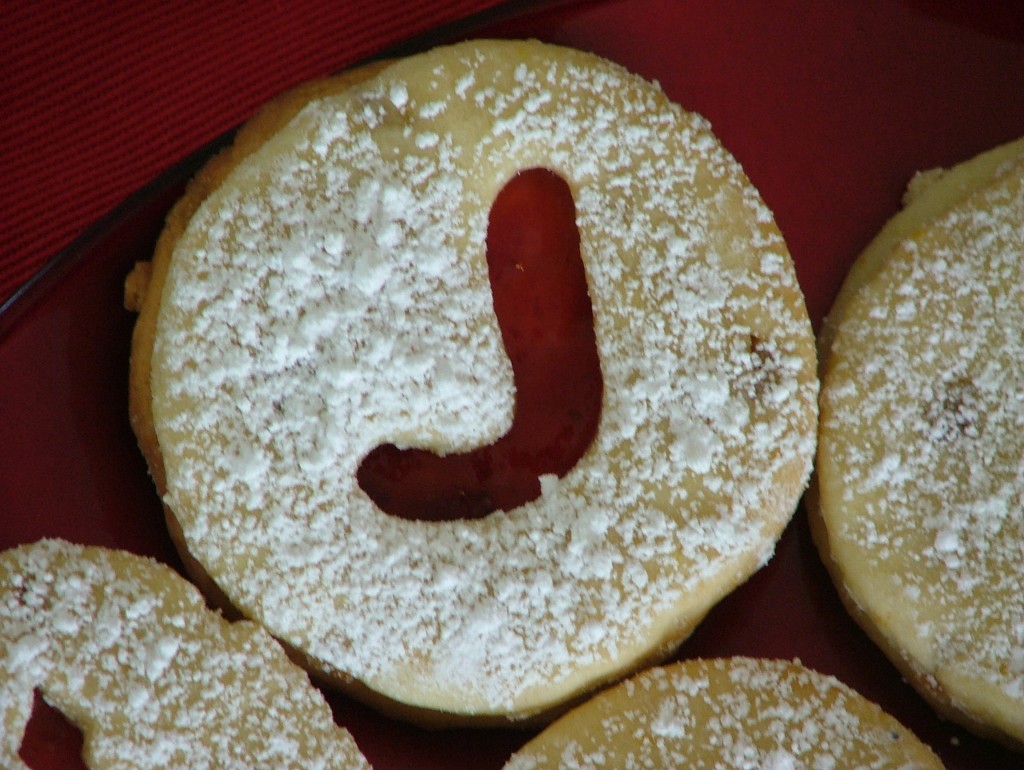

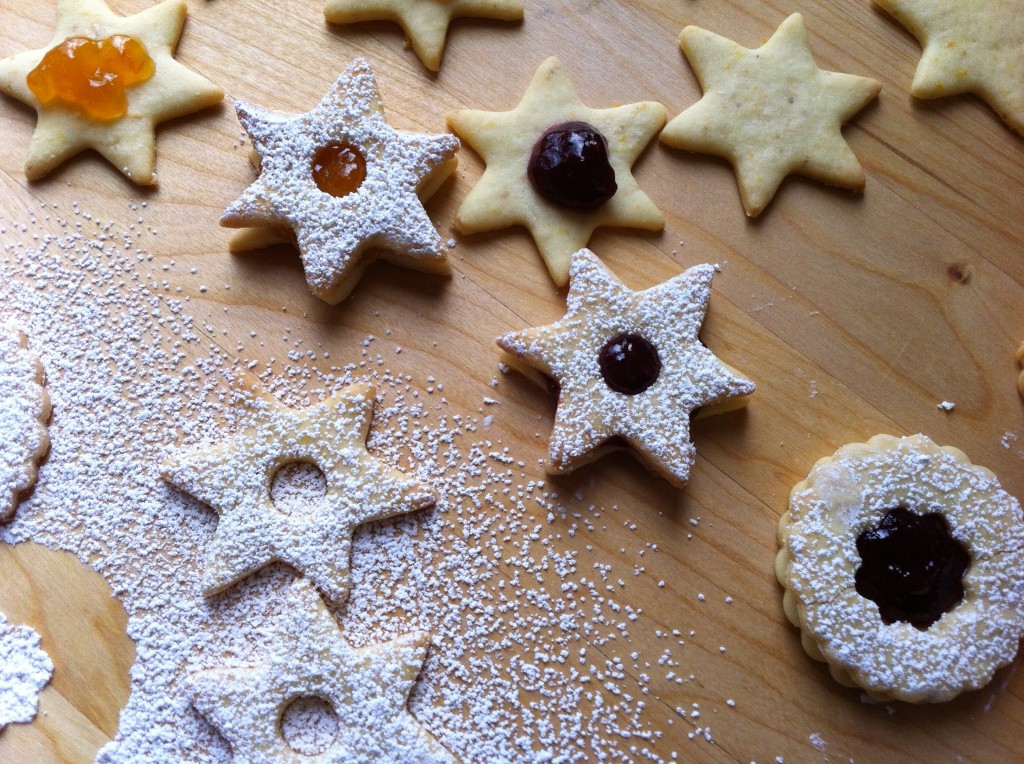





I’m going to try these. They look beautiful. I’m sure they taste great too! I will let you know how they turn out.
Lindsey, thanks for trying to make these. I definitely need feedback on whether or not my instructions are clear.
Marta, The boys & I thoroughly enjoyed all your treats, but these were their favorite. Your pictures are beautiful, too. Many thanks!
Thanks for your kind words, Kathleen. I was very happy to share some treats with you and your family.
Thanks for sharing! These were delicious.